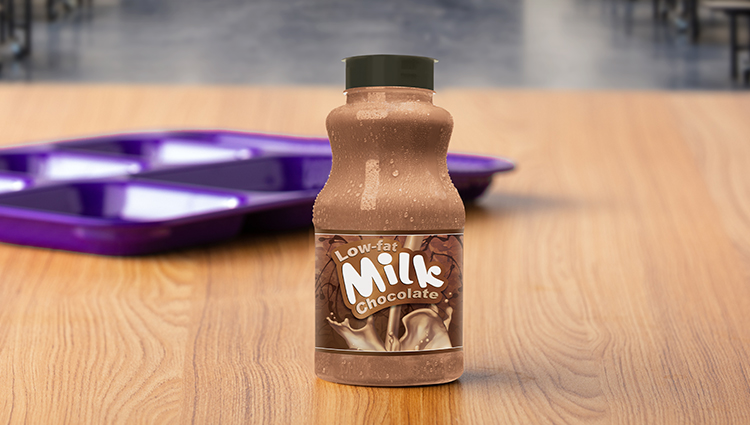When you talk to school nutrition directors about milk consumption, the topic of food waste comes up almost immediately. School nutrition professionals know that cafeteria trash cans are often full of partially consumed, or even full, milk containers. They also know that this wasted milk is a rich source of the nutrients that many students are missing, including calcium, potassium and vitamin D.
Concerns about nutrient consumption, food waste and customer satisfaction have led districts to reintroduce 1% flavored milk in their school nutrition programs. A December 2018 final rule by the Department of Agriculture (USDA)1 made serving 1% (low-fat) flavored milk in Child Nutrition Programs an easy option for districts wanting to make the switch. According to USDA, the new rule “will broaden the milk options in the National School Lunch Program and School Breakfast Program by allowing local operators to permanently offer flavored, low-fat milk.” Additionally, the “[rule] will also allow flavored, low-fat milk in the Special Milk Program for Children and in the Child and Adult Care Food Program for participants ages 6 and older.”
With this new flexibility, school districts are bringing back 1% flavored milk and seeing the benefits of greater milk sales and empty milk cartons in trash cans. A 2018 survey,2 conducted by Prime Consulting in Texas and Oklahoma, showed that the reintroduction of 1% flavored milk in schools increased flavored milk sales by 8% over the prior year (Fall ‘18 versus Fall ‘17). Overall milk sales also increased by 2%. Two districts continued to offer both 1% and fat-free, but student preference for the 1% was so strong that within 30 days, they dropped the fat-free flavored option altogether.
In Aldine ISD, located in Texas, Executive Director Dana Sheffield saw the obvious preference for 1% flavored milk firsthand. According to Sheffield, they allowed their students to test the 1% versus fat-free flavored milk prior to adding it back to their menus. “Hands down, the students liked the flavor of the 1% much better,” Sheffield concluded.
As milk sales increased in Aldine cafeterias, Sheffield knew that students were responding to a product that better suited their taste preferences. “The 1% flavored milk just has a more palatable taste for students, and [their preference] was obvious because we saw an increase in purchase of chocolate milk over the previous year,” Sheffield said. “Anything that we can do to help students take in those nutrients naturally found in milk is wonderful.”
In Livingston Parish Public Schools, located in Louisiana, Administrator of Special Programs for Child Nutrition Sommer Purvis reports steadily increasing milk sales and empty milk cartons in the trash cans. “We’ve noticed that the students are not only picking up the milk, but they’re actually consuming the milk,” Purvis says. “What we see being deposited into the trash cans are empty milk cartons, which is what really makes us excited about the increase in numbers that we’re seeing.”
Are you looking for ways to increase customer satisfaction and improve student nutrition at your school? Now is a great time to consider adding 1% flavored milk back to your menu and to begin a conversation with your dairy processor about the availability of 1% flavored products on your milk bid.
For more information about 1% flavored milk, contact your local Dairy MAX School Wellness Consultant
References:




